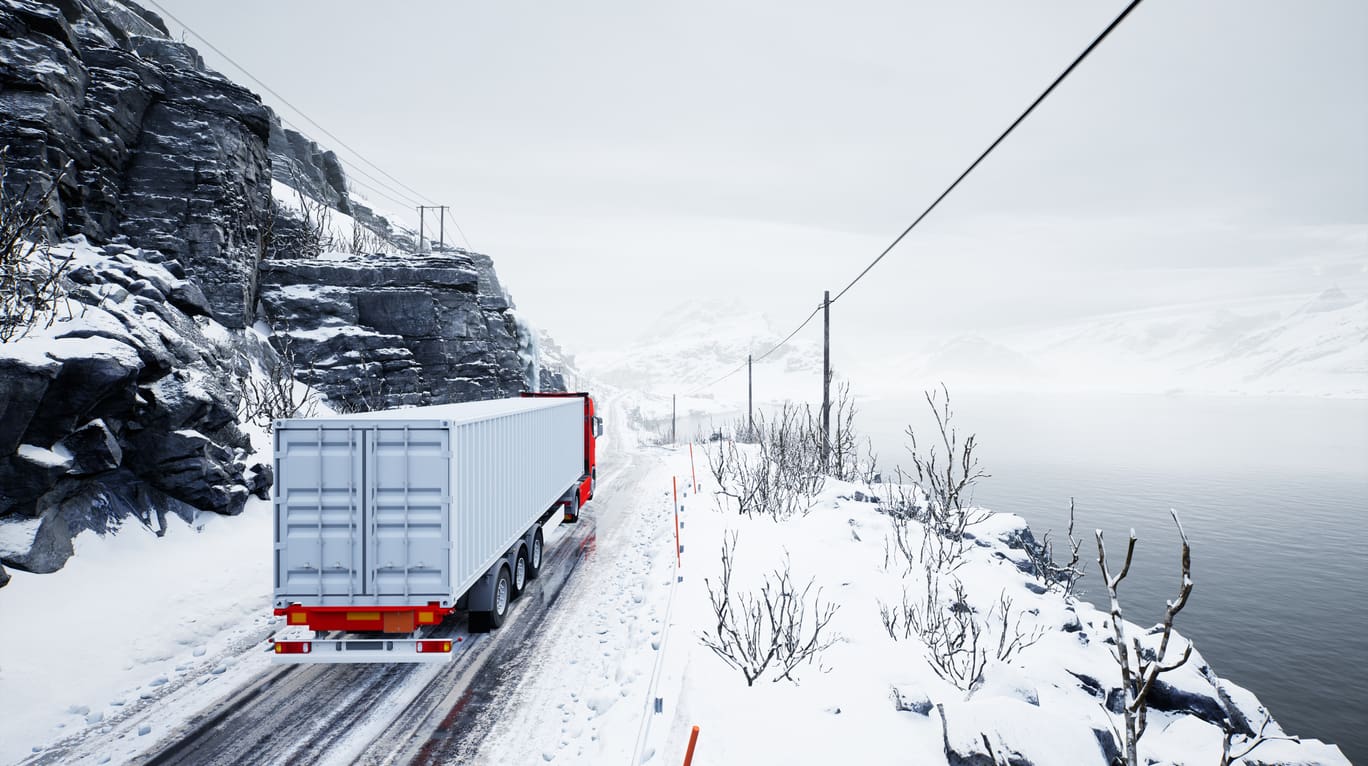How to Prepare for Truck Driving on Icy Roads
Truck driving on icy roads is a challenge whether you are a new driver or a seasoned Veteran. While winter can seem like a magical time, it brings some of the toughest obstacles that truck drivers face all year. In order to stay safe on the roads, drivers have to be prepared for any eventuality. If you want to brush up on how to stay safe while truck driving on icy roads, take these tips into consideration.

Tips for Truck Driving on Icy Roads
Have a Maintenance Checklist
The last thing you want while driving down icy roads is a breakdown. Make sure your rig is in top condition before driving to jobs in colder climates by following a winterized maintenance checklist. Colder weather makes batteries drain faster, so make sure your truck battery is still within the expiration date or consider getting it replaced if it’s about to expire. Do any tire maintenance before you head out since cold weather can affect the tire pressure and tread life of the rubber. Also, be sure to cap any valves to prevent moisture and ice build-up.
Create an Emergency Kit
In the event of an extreme cold weather condition or an accident on the road, having a stock of essential items in an emergency kit could be a lifesaver. Pack emergency truck maintenance gear like tire pumps and snow chains in case things get bumpy. Bring along items that can keep you warm, even if you don’t intend on sleeping in the cabin that night. A thermal sleeping bag or blankets can make a big difference in comfort. Make sure to take along non-perishable food and water when headed out for any job.
Plan Your Trips with Weather in Mind
While it’s always essential to research what weather conditions you drive into, this step can make a big difference to drivers who aren’t as experienced in snow. Use resources like N.O.A.A.’s National Weather Service as you plan your routes to make sure you don’t have any unexpected obstacles like harsh weather or road closings. If you know you’ll be delayed due to the weather, you have more time to contact your dispatcher and clue them in on the situation.
Go Slow if There’s Snow
Whether the snow is piled up on the road or there is ice covering the asphalt, it’s best to drive at slower speeds in cold weather. The majority of accidents during winter are caused by people not practicing defensive driving during winter, when road conditions are most uncertain. Remember: your life is more important than getting the load there in time. If road conditions get really rough, understand you may have to pull over and hunker down to be safe. You are driving a huge vehicle down icy roads, you have a responsibility to keep other drivers and yourself away from danger.
Know the Warning Signs
There are several small, but essential factors to pay attention to for truck driving on icy roads safely. For example, if your rig is driving on packed snow, look through your rearview mirrors to see what color your tread leaves behind. If the tread is black, your tires are running hot and creating too much friction, heating the ice enough to make it slick. This is a clear sign you are driving too fast. Slow down to cool off the tires and gain more traction.
If the road is wet but there is no spray coming from other drivers, this could mean hazardous black ice is forming. Slow down and use extra caution until road conditions are more consistent.
Keep Your Lights Clean
Winter brings on fog, snow, and storms. Visibility is key to safety on the road, so make sure to clean your headlights at each stop along your route. Snow, ice, and dirt can easily build up on the lights and block out the stream, making it harder for you to see others, and for others to see you. Clean off headlights, tail lights, and any emergency or indicator lights along with the rig. If you get into a situation where snow has accumulated a lot in a short amount of time, do your best to pull over and clear them off. Don’t immediately stop, since you don’t want to get hit. Instead, slowly drift to the side using indicator signals until you come to a safe stop. Then hop out the truck and clear your lights (and probably your windshield while you’re at it.)
Steer Clear of Others
Drivers tend to roam into packs, whether they like it or not. The issue with this in colder conditions is that it increases the chances of an accident. Even if you are driving with caution, another driver’s negligence leads to an accident. The best way to avoid this is to pay attention to groups forming along the road and take steps to avoid drifting with them. Keep a safe distance between you and road clusters so you have ample time to react and stop in case of an accident.
Treat Your Diesel
If your truck runs on diesel fuel, you probably already know how it reacts to colder temperatures. If you’re new, you may not know how diesel contains paraffin wax, which turns to gel in when the temperature drops. Before plowing into the snow, make sure to add anti-gel additives to your fuel tank (BEFORE you fuel up) and stock up for the season to prevent any funny business.
Get on the Road with TDI
Truck driving on icy roads is a huge challenge, but with training from Truck Driver Institute, you can learn to navigate the winter wilderness safely. If you’re interested in joining the shipping industry as your New Year’s Resolution, trust the expertly crafted courses at TDI, which will get you qualified for your CDL test in as little as three weeks. We’re one of the most trusted schools in the nation because carriers know our drivers are trained with efficiency and safety in mind. If you’ve got a sense of adventure this winter, contact us to get started to join one of the most in-demand industries today.
Get Started
Get your Class A CDL in our friendly, supportive CDL training program. TRAIN with experienced instructors – multiple good-paying, secure job choices with benefits available for eligible graduates. EARN $700 – $1000+ / week to start as a truck driver. Get started today by filling out the form below. We look forward to hearing from you!



